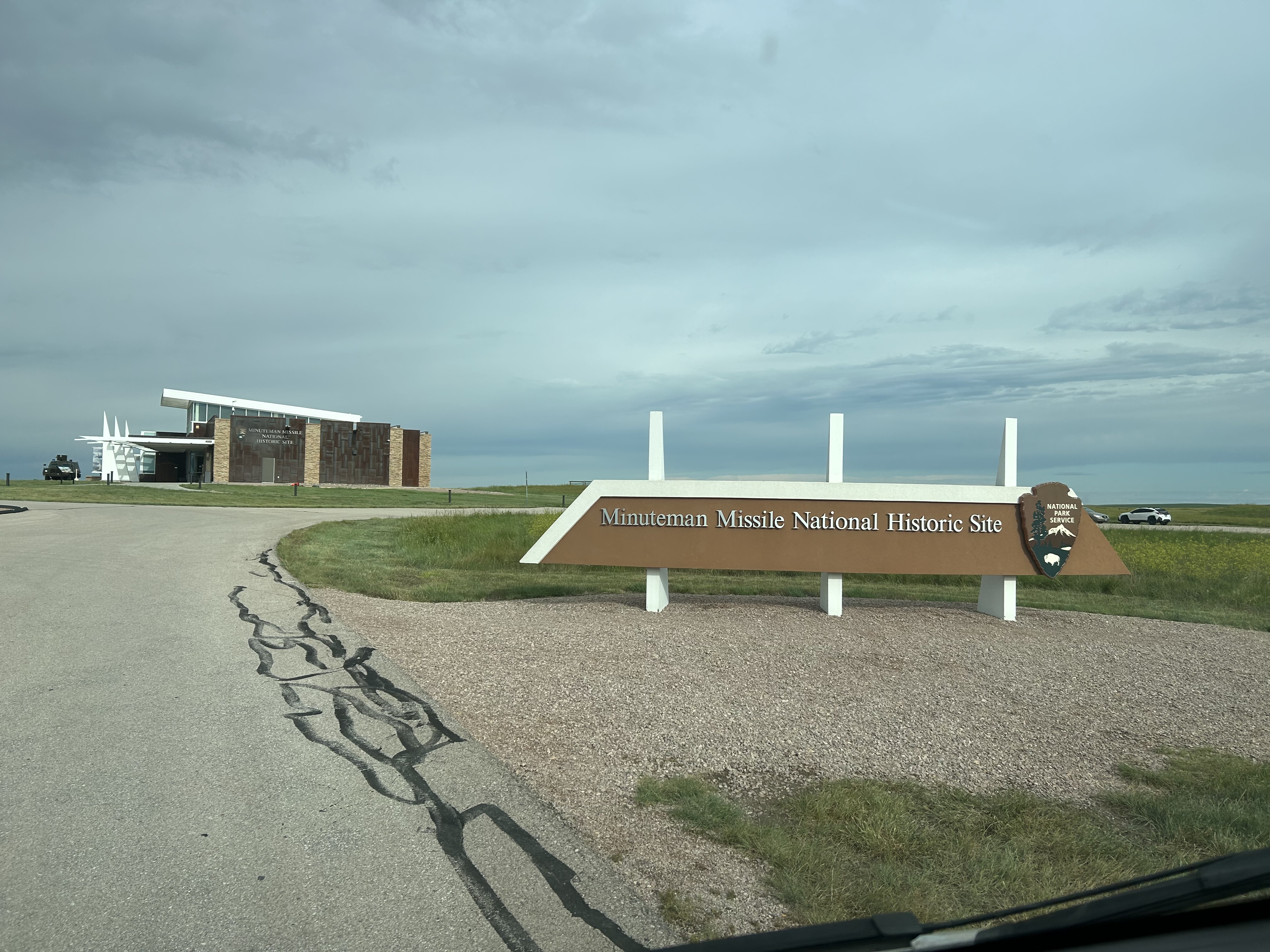Missiles and Monuments
Contact
University of Arkansas System Division of Agriculture
Cooperative Extension Service
2301 S. University Ave.
Little Rock, AR 72204

Missiles and Monuments
Being nosy by nature, I like to check things out. In South Dakota, across the interstate from the entrance to Badlands National Monument, I happened upon the Minuteman Missile National Historic Site. Of course, I had to check it out. This site and my later visit to the Manhattan Project National Historic Park in Los Alamos, New Mexico, got me thinking about blowing things up, namely the world.
The Minuteman site was chilling, especially after watching their film. Arkansans are no strangers to missiles buried in their backyards. Eighteen Titan II missiles were scattered around central Arkansas from 1962 to 1987, when they were officially decommissioned. The most deadly IBM accident to date — one involving a maintenance and refurbishing accident — killed 53 workers in a silo fire near Searcy on August 9, 1965. The warhead had been removed and the rocket did not explode.
But it was the second accident in 1980 that most of us of a certain age remember. Near Damascus, a workman dropped a socket that fell 80 feet into the silo, puncturing the skin of the first stage rocket. After seven hours of leaking, the thing exploded. It killed one airman and blew the 740-ton blast doors 100 feet in the air and 600 feet away. Fortunately, the safety features of the warhead worked, and it did not explode.
The Minuteman II Missiles were solid fuel based, unlike the Titans, which used liquid fuel and were inherently risky to work around. One thousand missiles were eventually deployed in the Great Plains states and they stood ready to blow up the world in a defensive proposition known as MAD (Mutually Assured Destruction). According to the film, there were a dozen major incidents — six on each side — that almost led to accidental launches. The scariest scenario was when a Russian soldier went with a gut feeling that something was wrong with his readout and didn’t push the button.
Efron White, a songwriting friend from Nashville, has a song called “Built by Man,” in which he says anything we build will eventually break down. Though he doesn’t mention systems built to guard against accidental nuclear missiles launches, I think it still applies. The Minuteman II missiles were deactivated with the Start I treaty in the late 1980s, but about 400 Minuteman III missiles with multiple warheads on each remain in three commands in western states.
Los Alamos surprised me. I had seen and enjoyed the movie Oppenheimer, so I expected to see a bunch of square, ugly government buildings in an expansive desert wasteland. Not so. The town of about 15,000 people is a green oasis with the large nuclear research facilities now relocated on a knoll south of town. The facilities used for the Manhattan Project were mostly temporary wartime construction and have long since been replaced. The commandeered Academy building and the homes of several of the key scientists remain. The accompanying museum tells the story of the work done there to build the first nuclear bombs.
As a kid, I remember the duck-and-cover drills we practiced at school during the Cold War. That a nuclear bomb would have been dropped in the middle of nowhere where I grew up seems a remote possibility, but if it did I was prepared. Today, I feel like that kid many decades ago. Confused and confounded by the insanity of it all. The Genie is out of the bottle, so in a weird kind of way, a policy of mutually assured destruction seems like a “reasonable” approach to preventing all-out nuclear war. But nuclear capabilities have now spread around the world, and some with fingers near the buttons don’t seem too reasonable. And then I hear the chorus from Efron’s song echoing in my head: “made by man….”
But the world will survive, regardless of the outcome. Nature has no favorite children, so it is our job to not do stupid things that remove us from the scene.
